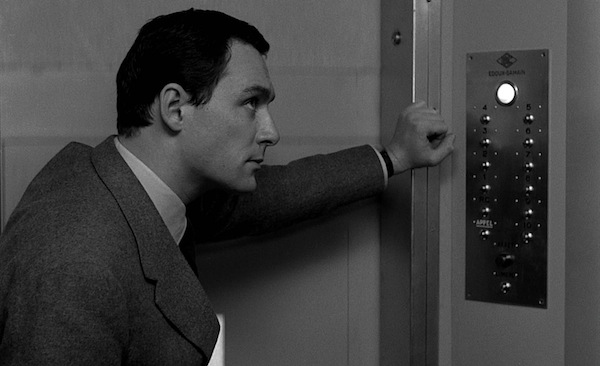You have no items in your cart. Want to get some nice things?
Go shoppingChallenging and groundbreaking for its time this late 50s film noir is a piece of cinematic mythology. Directed by Louis Malle, it gets a rerelease in cinemas this week.
Film noir is a genre noteworthy beyond just its style; its history boasts some of the most defining landmarks in the timeline of cinema. Taboos and audience expectations of the period were challenged through the portrayal of the weak male protagonist being led by the dominant and sexualised femme fatale. With the emergence of the French New Wave, noir would go as far as to challenge taboos within its own genre. Gone would be the attention to linear narrative and form; in its place would be jump edits and improvised dialogue with names such as Truffaut and Goddard as their architects. Self-deprecation became cool, non-conformity a style. This would be a torch carried by film makers of tomorrow – and make it acceptable for them to do so. With this in mind, Lift to the Scaffold, often cited as the first of the New Wave, should be viewed as something beyond the sum of its parts – this is a piece of cinematic mythology.
Directed by Louis Malle, on the surface this is a crime thriller we’ve heard of before; Julien Tavernier, (Maurice Ronet) is a soldier turned businessman seduced into murdering his industrialist boss. Enter our femme fatale, Florence Carala, (Jeanne Moreau) wife to the industrialist and lover of Tavernier. But the murder is hardly the centrepiece of the film, indeed it merely establishes the shape of things to come. As Tavernier takes the lift back to the scene of the crime, it shuts down, rendering him trapped and alone for the vast majority of the second and third acts. At this point in the film, Louis Malle takes a different tact, displaying the strength of this character not through his actions, but through his absence. His influence is keenly felt through the characters around him as they become embroiled in events that unfold as a direct consequence of his misfortune. Ronet’s scenes are not left lacking as a result; that primal, claustrophobic fear of being trapped in an elevator is something we can commonly identify with and it cleverly establishes much of the suspense and frustration that serves as the film’s backbone. Ronet’s performance is also instrumental to this. It takes a rare talent to act within such a limited environment and at the same time bring the character to life.
Sometimes you are sold to a film through a single scene, a single moment. The scene in which Carala scours the length and breadth of Paris for Tavernier may well have been it for me. Lift to the Scaffold was the film that made her career and you can see why as she verily struts to the improvised score by Miles Davis. Everything about these scenes is just so; the cinematography of the washed out city night that seems almost painted behind Moreau, the long held camera shots tracking her approach towards us, her face aghast with despair. Malle knew how to exploit the best of his leads and with Moreau, he lends her a vulnerability you’ll rarely see within the femme fatale stereotype.
Contrasting the heavier material, the story of the other, younger lovers and their capers on the road which parody those of Tavernier and Carala, encourage the film not to take itself too seriously. Lift to the Scaffold becomes increasingly self-aware during these scenes; the blend of tone between hard-nosed noir and satirical humour shouldn’t work but the events are so cleverly woven you may even find yourself laughing at moments you shouldn’t.
So how does time change such a piece? What resonance does it still hold? Don’t be surprised if you find yourself mistaking Lift to the Scaffold for a film shot today, set in the fifties. Louis Malle, in his first debut feature, treads with vision where more seasoned filmmakers of his time would not. Wise beyond its years, Lift to the Scaffold satisfies in its well-versed noir sensibilities and paves the way for future filmmakers. “Madame, there are more than several photos in a camera,” a Policeman states in the final scene, a line that speaks volumes about what this film has to offer sixty years on at its reissue. Something defining, something downright pioneering.
The rerelease of Lift to the Scaffold will be in selected cinemas from February 7th.

About Jake Munn
Jake Munn tutors media at an alternative learning provision in Hertfordshire by day and directs short and corporate films by night. He fits writing fiction in between. Favourite film - The Good, The Bad and The Ugly.





